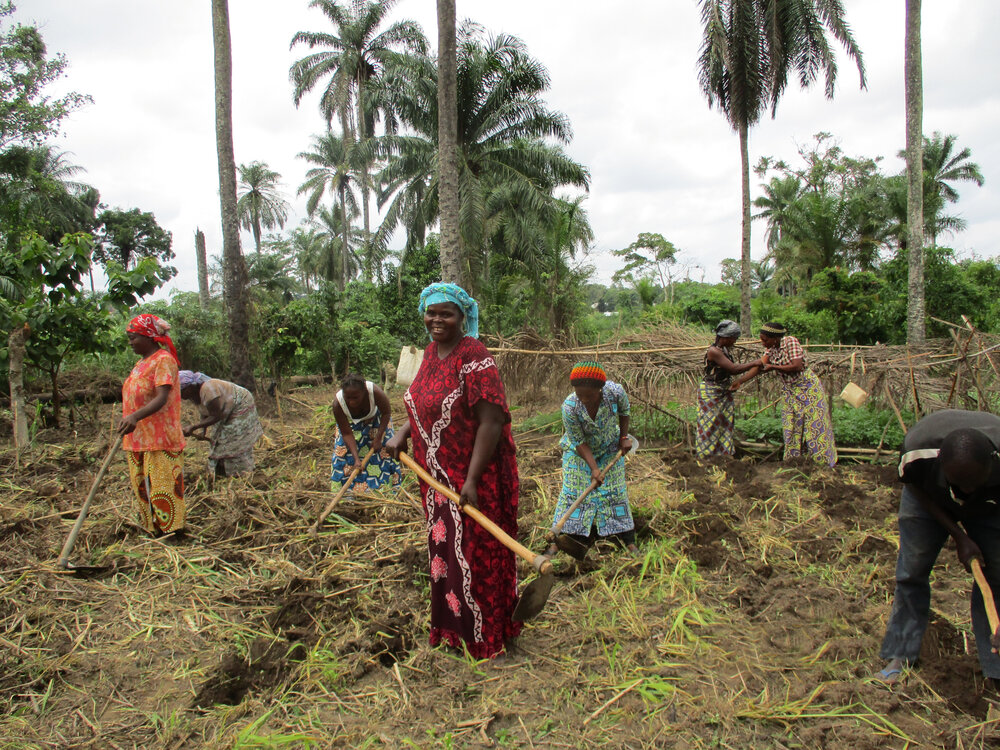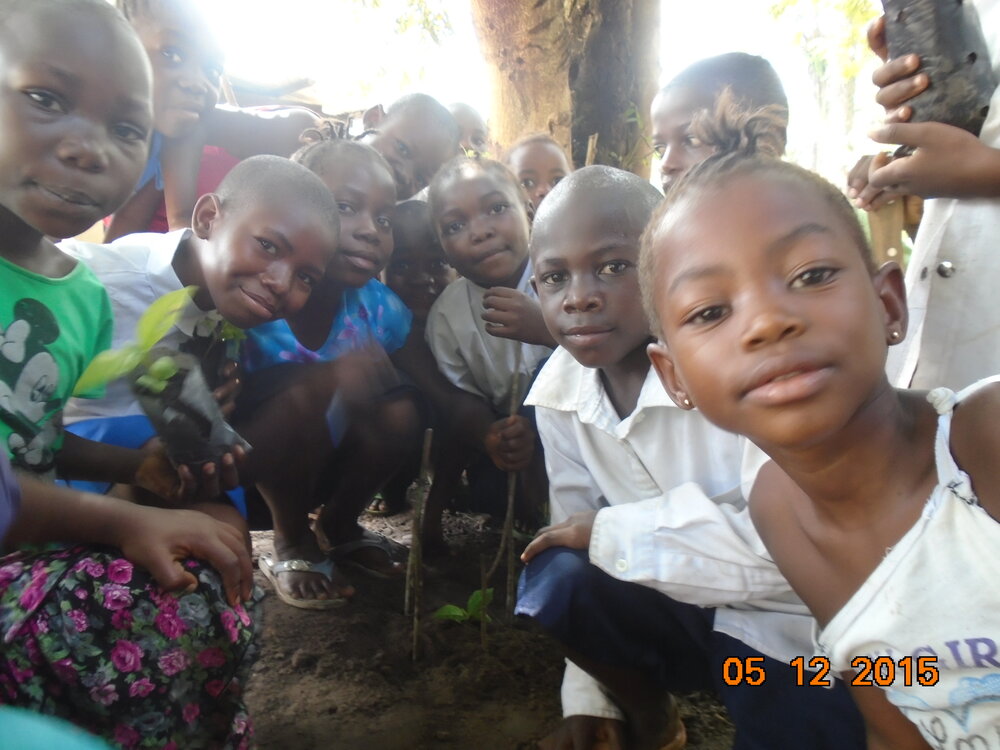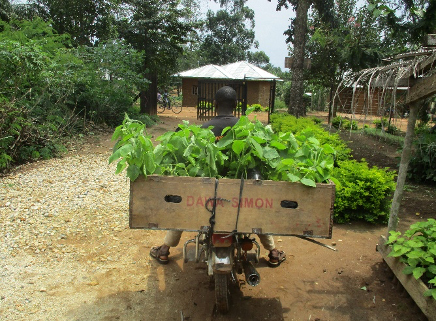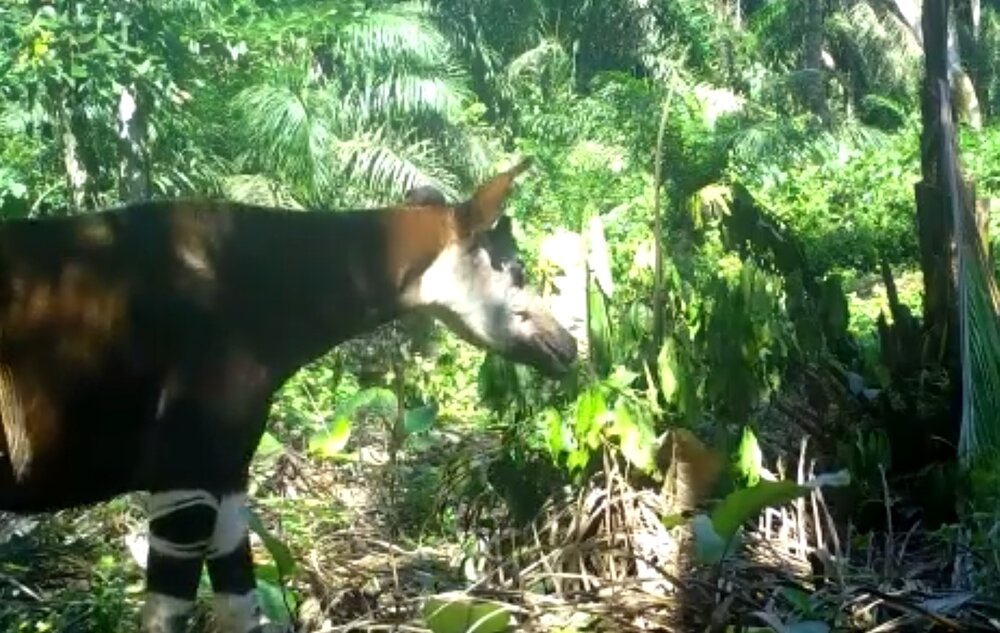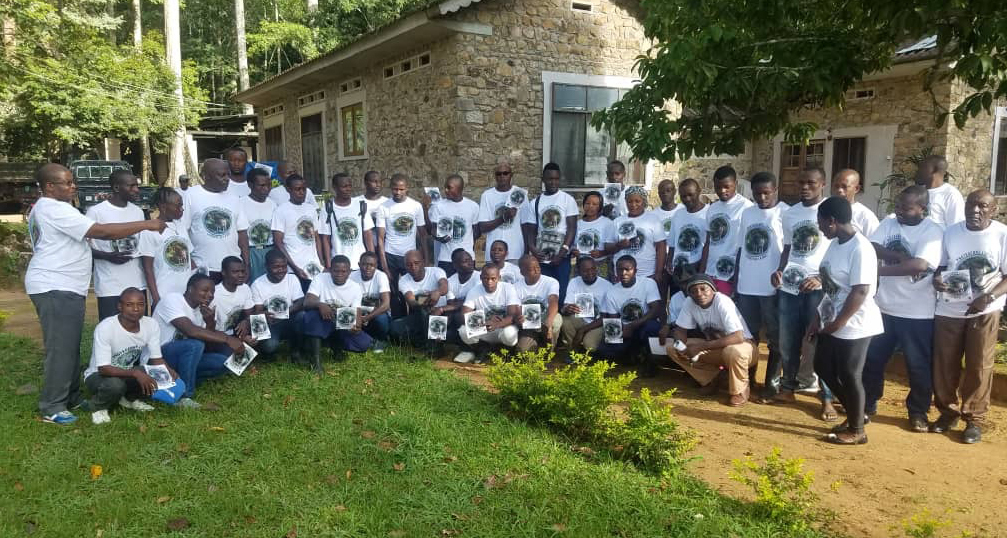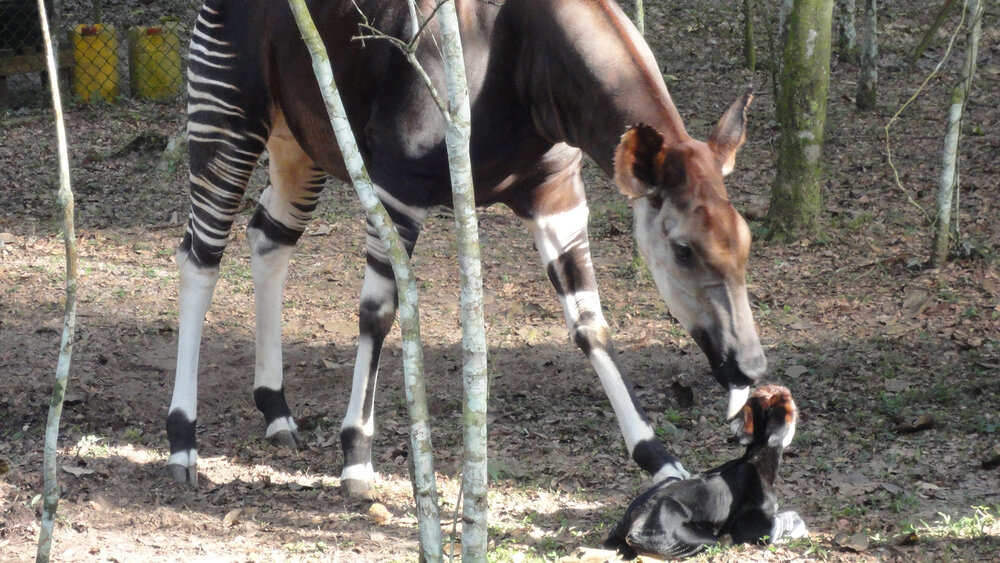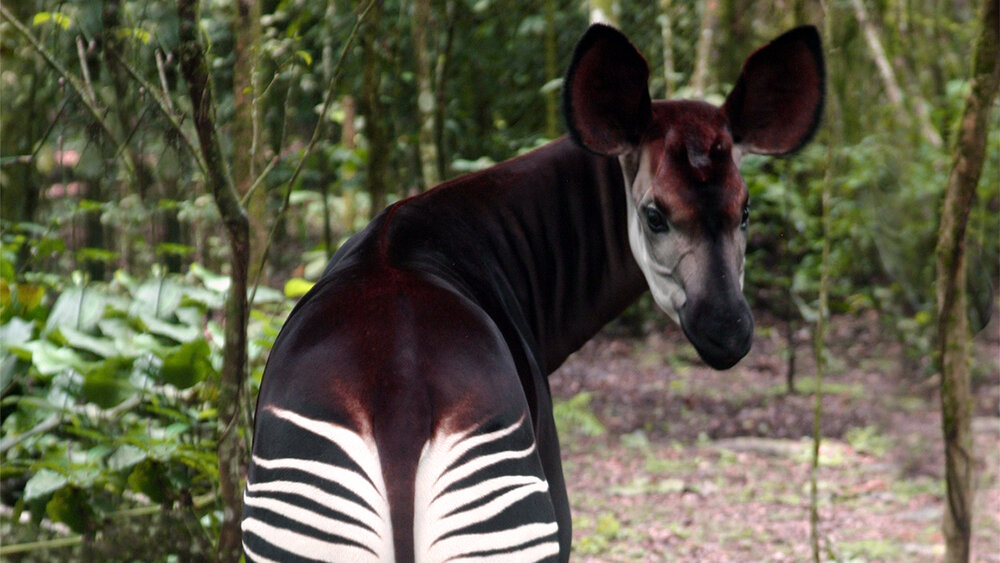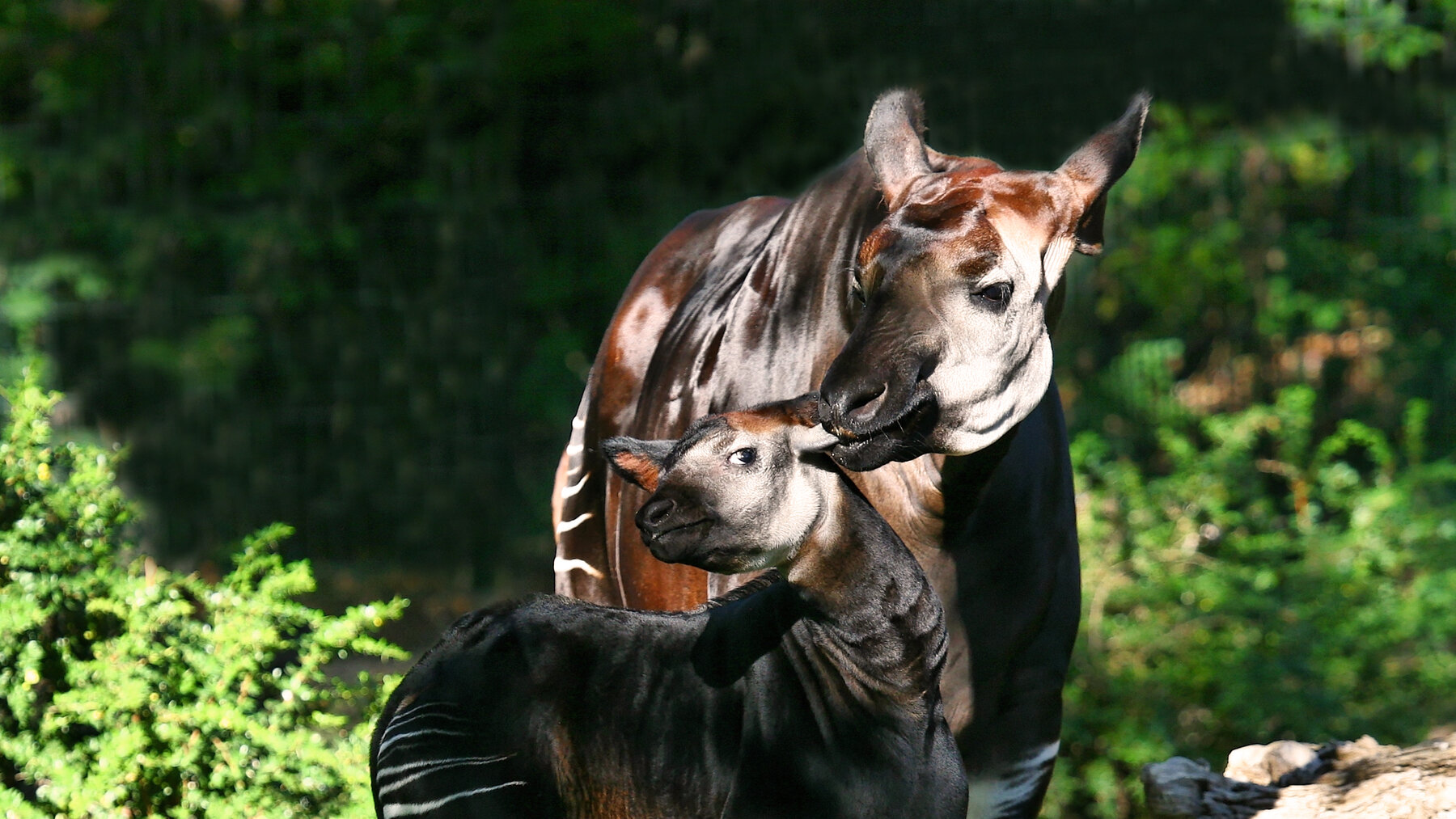
Okapi
Zoo Berlin supports the Okapis in DR Congo.
Project facts
- Project name
Okapi Conservation Project
- Species
Okapi (Okapia johnstoni)
- IUCN threatened status
Endangered (EN)
- Project location
Okapi Wildlife Reserve in the Ituri Rainforest, Democratic Republic of the Congo (DR Congo)
- Greatest threat
Loss of habitat due to expansion of human settlement; poaching and war
- Response
Training locals to work as rangers; creating future prospects for locals; raising awareness of alternatives to bushmeat
Threat Categories of IUCN

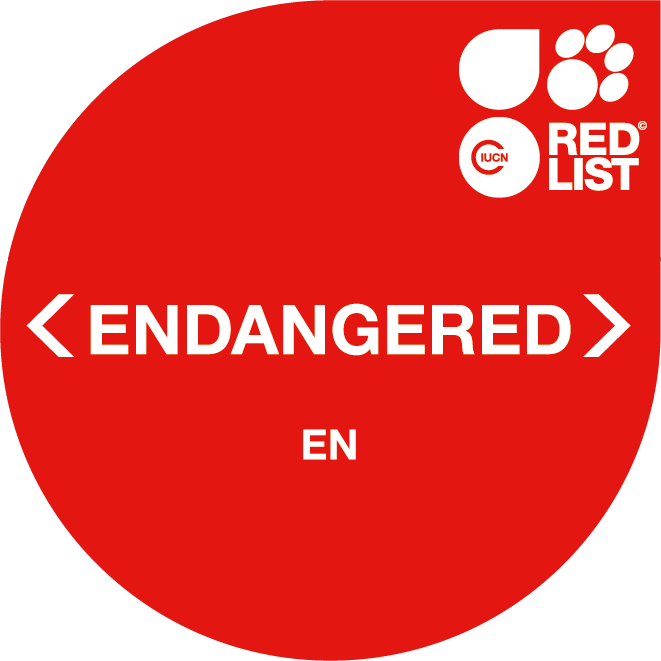
The mysterious “forest giraffe”
The exotic okapi is only found in a handful of European zoos – and since the 1980s, Zoo Berlin has been one of them. Okapis were not discovered by scientists until the early 20th century and still remain something of a mystery today. A close relative of the giraffe, the okapi is endemic to DR Congo in Africa – which means it is not found in the wild anywhere else in the world. The animals are very striking with their dark, reddish-brown coat and zebralike stripes on their upper legs. In recent decades their numbers have fallen by 50 percent, resulting in their current “Endangered” status on the Roten Liste der Weltnaturschutzunion (IUCN).
Life under cover
Okapis are shy and only inhabit dense and shady parts of the forest far from human settlements, where their stripes and dark coat provide the perfect camouflage. They avoid sparse forest and scrubland. Zoo Berlin supports the Okapi Conservation Project (OCP), founded in 1987, which works with the Congolese Institute for Nature Conservation (ICCN) to protect both the okapis and the entire ecosystem of their Ituri Rainforest habitat. Ituri covers an area of 63,000 km2 in northeastern DR Congo and contains a rich variety of species. Occupying 13,700 km2 of this lowland rainforest is the Okapi Wildlife Reserve, which is home to some 5,000 okapis and was declared a UNESCO World Heritage Site in 1996. Here, the OCP established a research and conservation centre as a base for its work protecting the okapis and their habitat. The project also aims to protect the biological and cultural diversity of the entire Ituri Rainforest.
Threats from civil war, mining and hunting
There are a number of reasons for the dramatic decline of the okapi population in DR Congo: armed conflict in a region ravaged by civil war; major habitat loss due to illegal logging and mining for gold and coltan; and illegal hunting to meet the high demand for bushmeat. Since the 1980s, human settlements have spread across huge areas here. Particularly in the dense Ituri Rainforest, which was once home to a large number of okapis, the forest clearance this expansion entails constitutes a serious loss of habitat.
Creating opportunities for the future
All efforts to protect the okapi would be in vain without the support of local people. A lack of future perspectives makes it hard to convince local villagers of the need for conservation efforts. To tackle this problem, the OCP implements two main strategies. On the one hand, it supports the training of local village residents to become rangers within the okapi reserve. The opportunities that this training provides for the rangers and their families results in a win-win situation for villagers and okapis.
Getting locals on board
The second main strategy is to teach modern farming methods that generate higher revenue and have less impact on the local ecosystem. To help reduce the demand for bushmeat, for example, cane rats can be bred to provide an alternative source of protein. The project has also helped to build facilities such as schools, hospitals and fresh water supply systems. In this way, protecting the okapis and their habitat goes hand-in-hand with improving the living conditions of local people.
Destruction and death caused by rebel fighters
Civil unrest in the region has drastic consequences for the work of local nature conservationists. The savage rebel groups that operate in this part of DR Congo are financed primarily through poaching, so the presence of conservation stations in occupied areas makes it harder for these rebels to conduct their illegal business. In June 2012, Mai-Mai rebels retaliated by attacking the Okapi Conservation Project headquarters and the nearby village of Epulu. The attack left six people and all of the centre’s 14 okapis dead. The centre was destroyed, equipment and medicine were stolen, and several people were kidnapped from the village.
Lives at risk
Another attack was made on the Okapi Wildlife Reserve in July 2017. This time, unidentified attackers targeted a camp within the reserve that housed a group of ICCN rangers and three foreign journalists – two Dutch and one American. The journalists were carrying out research for a documentary on the dangers faced by the okapi reserve and its rangers, who risk their lives every day to protect these rare creatures. Five of the rangers were killed in the attack, while eight managed to escape along with the three journalists. Another fatal attack on project staff followed soon after in 2018.
The fight continues
Despite these devastating setbacks, the project workers and the local people are determined to keep the conservation station up and running and continue protecting the okapis. The Okapi Wildlife Reserve remains the most secure reserve for okapis in DR Congo. Zoo Berlin has now been supporting this project for more than 30 years.
Photos: © Okapi Conservation Project
